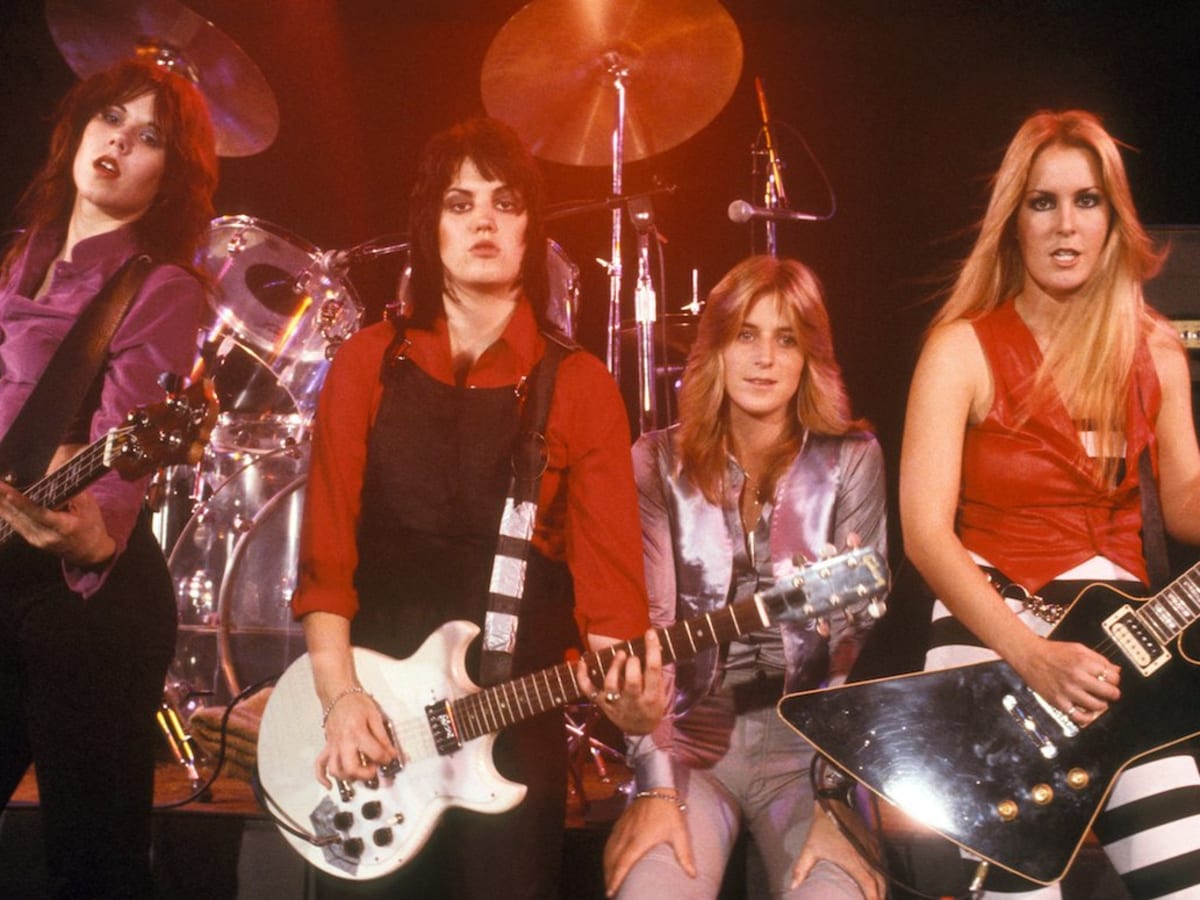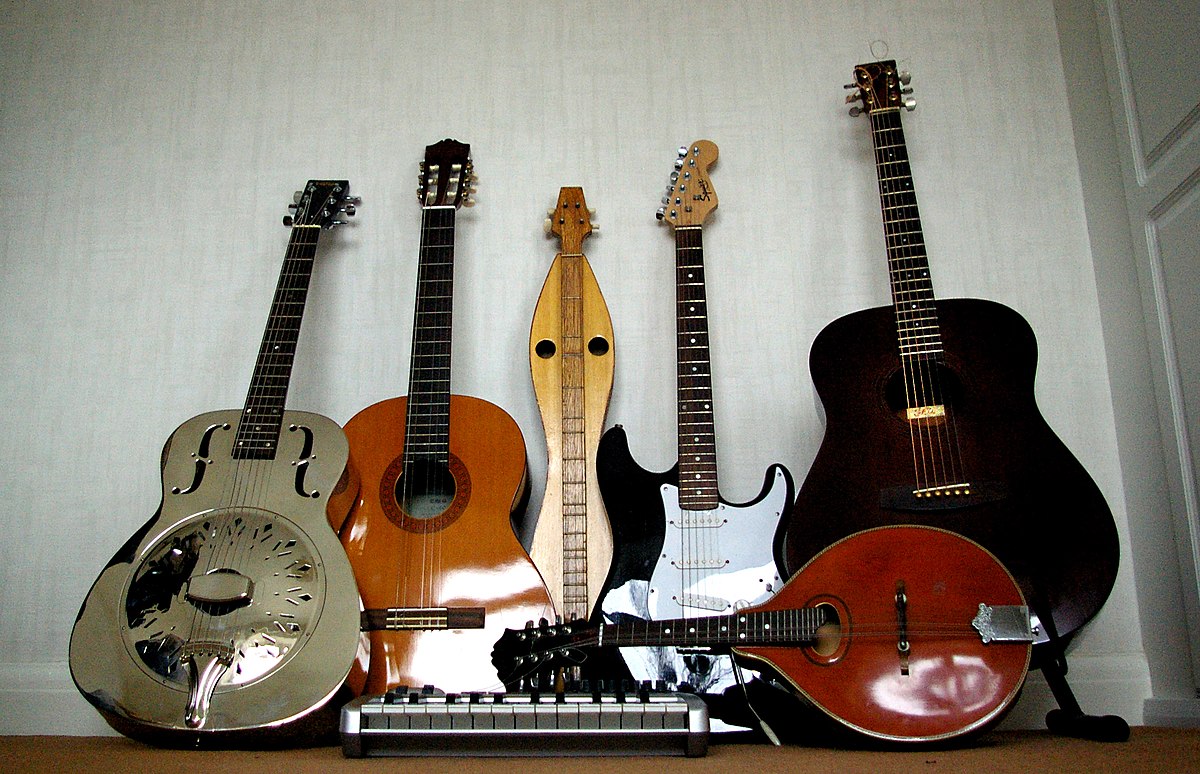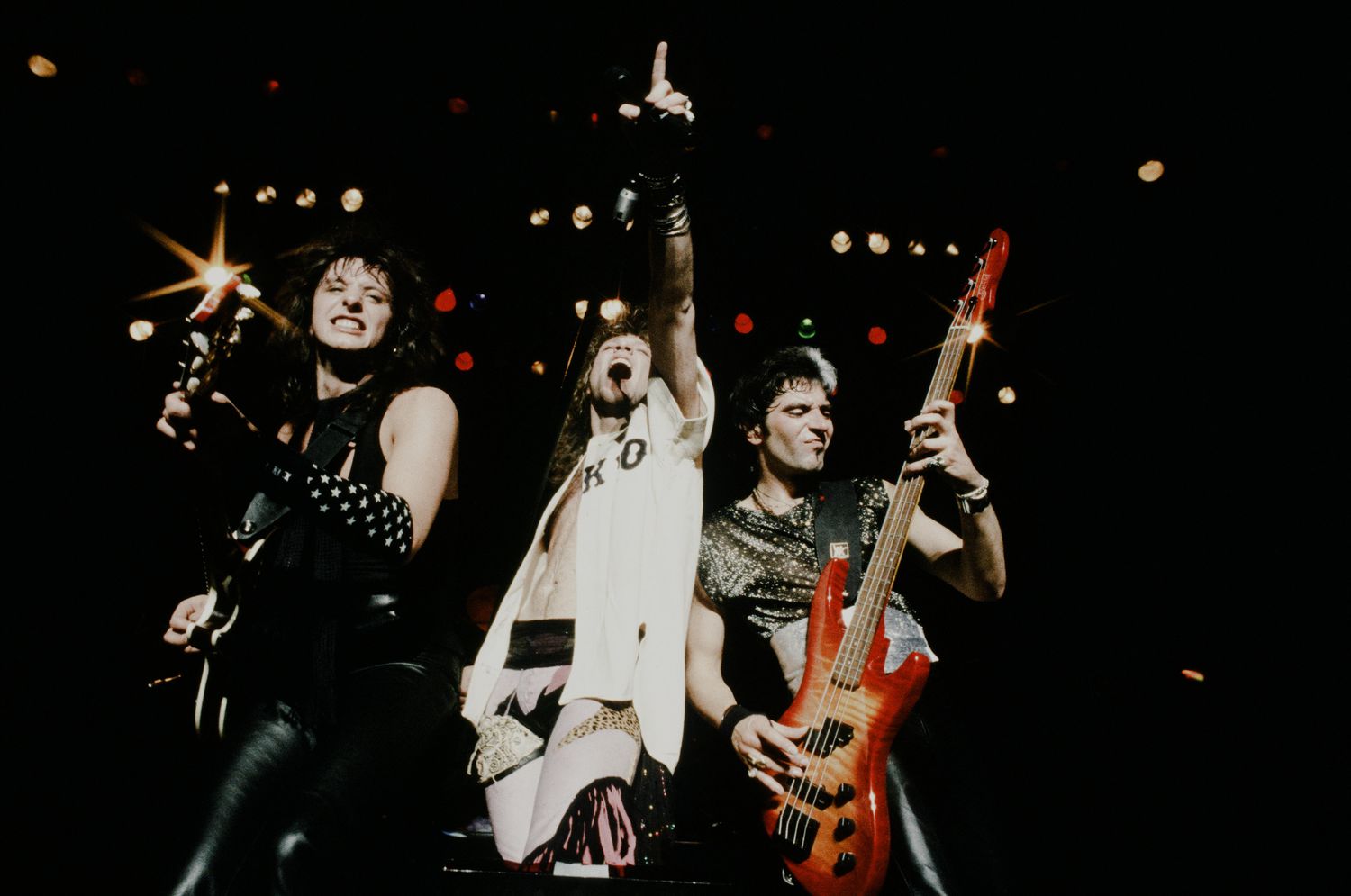

Rock
What Is Indie Rock Music
Published: November 5, 2023
Discover the captivating world of indie rock music, featuring unique sounds and raw energy. Explore the genre that defined a generation and find your new favorite bands.
(Many of the links in this article redirect to a specific reviewed product. Your purchase of these products through affiliate links helps to generate commission for AudioLover.com, at no extra cost. Learn more)
Table of Contents
Introduction
Indie rock music is a genre that has captivated music lovers around the world for decades. Known for its raw energy, rebellious spirit, and DIY ethos, indie rock has carved its own niche in the music industry. While mainstream music often relies on major labels and commercial success, indie rock champions independent artists who create music on their own terms.
What sets indie rock apart is its ability to channel alternative and underground sounds, paving the way for innovation and experimentation. It offers a refreshing escape from formulaic pop tunes and allows artists to express their unique artistic visions. The genre, which emerged in the 1980s, continues to evolve and push boundaries, attracting a loyal and passionate following.
Indie rock is characterized by its diverse range of sounds and styles. From lo-fi garage rock to dreamy shoegaze, from gritty punk to melodic folk, there is no shortage of subgenres within indie rock. This gives listeners the opportunity to explore a vast and ever-expanding musical landscape filled with discoveries.
Over the years, indie rock has had a profound impact not only on the music scene but also on popular culture. Its influence can be seen in fashion, art, film, and even political movements. Indie rock has a way of connecting with people on a deeper, more personal level, resonating with those who crave authenticity and a sense of individuality.
Throughout this article, we will delve into the fascinating world of indie rock, exploring its history, characteristics, influential artists, and the current state of the genre. Whether you’re a die-hard fan or just starting to dip your toes into indie rock, there is something for everyone to appreciate and discover.
Definition of Indie Rock Music
Indie rock music, also known as independent rock, refers to a genre that encompasses a wide range of musical styles and sounds. At its core, indie rock is characterized by its emphasis on artistic independence, DIY aesthetics, and a rejection of mainstream commercialism. Unlike music created by major record labels, indie rock artists retain complete creative control over their music, often releasing their albums through independent labels or self-publishing.
What sets indie rock apart from other genres is its spirit of individuality and non-conformity. Artists within the indie rock scene are known for forging their own path, free from the constraints of mainstream expectations. This allows them to experiment with different musical styles and explore unique sonic landscapes that might not appeal to a wider audience.
One of the defining aspects of indie rock is its grassroots origin. Many indie rock bands start off playing in local venues, self-producing their albums, and relying on word-of-mouth and online platforms to gain recognition. This DIY approach gives indie rock a sense of authenticity and intimacy, fostering a close connection between artists and their passionate fan base. Indie rock is often associated with a strong sense of community, with artists and fans supporting and uplifting each other in their creative endeavors.
While the term “indie” originally referred to music created independently from major record labels, it has evolved over time to encompass a broader spectrum of sounds and styles. Indie rock can incorporate elements from various genres, including rock, punk, pop, folk, and electronic, making it a versatile and ever-evolving genre.
It’s important to note that the term “indie” has also been co-opted by the mainstream music industry. Many popular artists and bands are labeled as “indie” despite being signed to major labels. This blurring of boundaries can sometimes make it challenging to define indie rock solely based on the label an artist carries. However, the essence of indie rock lies in its independent spirit, artistic integrity, and dedication to unconventional and non-conformist music.
Overall, indie rock music is a diverse and vibrant genre that celebrates individuality, artistic freedom, and a DIY ethos. It continues to push boundaries, challenge norms, and create a platform for independent artists to share their unique voices with the world.
History of Indie Rock Music
The roots of indie rock can be traced back to the late 1970s and early 1980s, during a time when punk rock and post-punk movements were gaining momentum. Influenced by the DIY ethic of punk, independent record labels began to emerge, providing a platform for bands who wanted to release music outside of the mainstream music industry.
One of the pivotal moments in indie rock history was the emergence of the UK indie scene in the 1980s. Bands like The Smiths, The Cure, and Joy Division gained popularity through independent labels such as Factory Records and Rough Trade. These bands embraced a more melodic and introspective sound, combining elements of punk, new wave, and alternative rock. Their music resonated with a generation disillusioned by the commercialization of the music industry, and the DIY ethos of indie rock became a rallying cry for artists and listeners alike.
In the United States, the 1980s also saw the rise of indie rock with bands like R.E.M., Sonic Youth, and Hüsker Dü leading the charge. These bands, along with others from the burgeoning college rock scene, carved out their own space in the music industry by releasing albums on independent labels like SST and Touch and Go Records. The indie rock movement was gaining momentum on both sides of the Atlantic, fueled by the desire for alternative sounds and an aversion to mainstream conformity.
As the 1990s rolled in, indie rock reached new heights with the explosion of the grunge scene in Seattle. Bands like Nirvana, Pearl Jam, and Soundgarden brought raw energy and a DIY ethos to the forefront, challenging the dominance of mainstream rock. The success of these bands demonstrated that indie rock could have commercial viability while still maintaining its independent spirit.
The 2000s and beyond witnessed further evolution in indie rock, as the internet revolutionized the way music was shared and consumed. Artists could now self-release their music digitally, reaching a global audience without the need for traditional record labels. This shift democratized the industry, allowing independent artists to thrive and connect directly with their fans.
Today, indie rock continues to evolve and adapt to the changing music landscape. It has become a broad umbrella term that encompasses a wide array of subgenres and styles, reflecting the diversity and innovation within the indie rock community. From the revival of garage rock to the experimentation of art rock, indie rock remains a beacon of independent spirit, creativity, and resistance to the mainstream.
Overall, the history of indie rock is a testament to the enduring power of independent music and the impact it can have on popular culture. It has provided a platform for artists to express themselves freely and connect with listeners on a deeper level, solidifying indie rock as a vital force in the music industry.
Characteristics of Indie Rock Music
Indie rock music is defined by a set of distinct characteristics that set it apart from other genres. These characteristics encompass both musical elements and the ethos behind the music. Let’s explore some of the key traits that define indie rock.
Artistic Independence: Indie rock artists pride themselves on maintaining creative control over their music. They often write their own songs, produce and record their albums, and make decisions about their artistic direction without interference from major labels or mainstream trends. This emphasis on artistic independence allows for greater experimentation and creative freedom.
DIY Ethos: The DIY (Do-It-Yourself) ethic is at the core of indie rock. Artists within the genre often take on multiple roles, such as self-producing their music, designing their album artwork, booking their own shows, and managing their own careers. This self-sufficiency allows indie rock artists to retain control over their creative output and maintain a closer connection with their fans.
Alternative and Underground Sounds: Indie rock explores unconventional and non-commercial sounds, drawing inspiration from alternative music genres such as punk, post-punk, garage rock, shoegaze, and indie pop. It embraces a diverse range of sonic landscapes, often featuring raw and unpolished production values that give the music a distinct and authentic character.
Emotional and Introspective Lyrics: Lyrics in indie rock often delve into personal experiences, introspection, and societal commentary. The genre is known for its poignant and heartfelt storytelling, capturing the joys, struggles, hopes, and fears of the artists and their listeners. The lyrics in indie rock music can evoke powerful emotions and resonate with a sense of authenticity.
Diverse Subgenres: Indie rock encompasses a wide range of subgenres, each with its own sonic characteristics and fan base. From the lo-fi simplicity of bedroom pop to the energetic grit of garage rock, from the dreamy atmospheres of shoegaze to the melodic beauty of indie folk, there is a subgenre of indie rock to suit every musical taste.
Intimacy and Connection: Indie rock fosters a sense of intimacy and connection between artists and their audience. The independent nature of the genre often means that shows are held in smaller, more intimate venues, allowing fans to experience the music up close and personal. This creates a strong bond between artist and listener, fostering a sense of community and shared passion.
Innovation and Non-Conformity: Indie rock celebrates innovation and non-conformity, encouraging artists to push boundaries and explore new sonic territories. From unconventional song structures to experimentation with instrumentation and production techniques, indie rock artists are constantly pushing the envelope and challenging the norms of mainstream music.
These characteristics come together to define the unique and dynamic nature of indie rock music. It is a genre that continues to evolve and surprise, drawing in listeners with its authenticity, diversity, and unyielding spirit of independence.
Influence of Indie Rock Music
Indie rock music has had a profound influence on the music landscape and beyond, shaping not only the sounds we hear but also the culture we live in. Let’s explore some of the ways in which indie rock has made its mark:
Alternative Music Movement: Indie rock has been a driving force behind the alternative music movement, providing a platform for artists to explore new sounds and challenge the conventions of mainstream music. It has paved the way for the success of alternative and indie artists in the industry, influencing the rise of alternative rock, indie pop, and other related genres.
DIY Philosophy: The DIY ethos of indie rock has permeated various aspects of the music industry and beyond. Independent labels, self-releasing music, and grassroots marketing techniques inspired by indie rock have become common practices among artists, allowing them to maintain control over their art and connect directly with their fans.
Trendsetting Fashion and Style: Indie rock has had a significant impact on fashion and style, influencing trends and aesthetics. From vintage clothing, flannel shirts, and ripped denim to indie haircuts and quirky accessories, the indie rock scene has inspired unique and distinctive looks that have become mainstream fashion statements.
Emergence of DIY Venues and Festivals: The rise of indie rock has led to the creation of DIY venues and festivals that cater to independent artists and fans. These intimate spaces provide a platform for emerging artists to showcase their talent, fostering a sense of community and supporting the growth of independent music scenes around the world.
Influence on Mainstream Music: Indie rock has made a significant impact on mainstream music, with many indie artists breaking through to achieve mainstream success. The success of bands like Arctic Monkeys, Arcade Fire, and The Black Keys has shown that indie rock can resonate with a wide audience and influence the direction of popular music.
Indie Film and Soundtracks: Indie rock music has become a staple in indie films with its raw, emotive, and atmospheric qualities. Many independent films feature indie rock soundtracks, creating an immersive and authentic experience for viewers and further expanding the reach of indie rock beyond the music industry.
Cultural and Political Movements: Indie rock has played a role in various cultural and political movements, voicing dissent and promoting social change. The genre’s emphasis on individuality, counterculture, and non-conformity has resonated with movements advocating for progressive values, independent thought, and social justice.
Inspiration for Future Artists: Indie rock has inspired countless aspiring musicians to pursue their passion for music and explore their own unique creative paths. The independent and innovative spirit of indie rock serves as a beacon of inspiration for emerging artists, encouraging them to find their own voice and push the boundaries of their art.
The influence of indie rock music extends far beyond the realm of music itself. It has shaped the way we create and consume music, influenced fashion and style, and served as a catalyst for cultural and social change. Indie rock continues to be a driving force in the music industry, constantly evolving and making its mark on the world.
Popular Indie Rock Artists
Indie rock has been home to a wealth of talented and influential artists who have left an indelible mark on the genre and the music industry as a whole. Here are just a few of the many popular indie rock artists that have captivated audiences:
Radiohead: Known for their genre-bending music and thought-provoking lyrics, Radiohead has pushed the boundaries of indie rock. With albums like “OK Computer” and “Kid A,” they have become synonymous with innovation, experimentation, and introspective songwriting.
Arcade Fire: Renowned for their soaring anthems and grandiose soundscapes, Arcade Fire has garnered critical acclaim and a dedicated fan base. Their album “The Suburbs” earned them a Grammy Award for Album of the Year, solidifying their place as one of the most influential indie rock bands of the 21st century.
Wilco: Wilco’s eclectic blend of alternative country, folk, and experimental rock has won them a devoted following. With albums like “Yankee Hotel Foxtrot” and “A Ghost Is Born,” Wilco has continuously pushed the boundaries of indie rock, crafting introspective and emotionally-charged music.
Arctic Monkeys: Hailing from Sheffield, England, Arctic Monkeys burst onto the indie rock scene with their debut album “Whatever People Say I Am, That’s What I’m Not.” Known for their energetic live performances and catchy hooks, they have become one of the most successful and influential indie rock bands of the 2000s.
The Strokes: The Strokes’ blend of garage rock and post-punk revival helped spearhead the indie rock resurgence in the early 2000s. Their debut album “Is This It” is widely regarded as a modern indie rock classic and has influenced a new generation of musicians.
Fleet Foxes: Fleet Foxes rose to prominence with their lush harmonies, folk-influenced sound, and evocative songwriting. Their self-titled debut album drew critical acclaim and established them as one of the leading voices in indie folk.
Vampire Weekend: Known for their eclectic blend of indie rock, pop, and world music influences, Vampire Weekend has brought a unique and infectious sound to the indie rock scene. Their albums, including “Vampire Weekend” and “Modern Vampires of the City,” have received widespread acclaim and commercial success.
Tame Impala: Tame Impala, the brainchild of multi-instrumentalist Kevin Parker, has gained a devoted following for their psychedelic soundscapes and dreamy melodies. With their albums “Lonerism” and “Currents,” Tame Impala has pushed the boundaries of indie rock, infusing it with electronic elements and creating a sound that is truly their own.
Bon Iver: Bon Iver’s atmospheric folk music and hauntingly beautiful vocals have captivated audiences worldwide. From the intimate debut album “For Emma, Forever Ago” to the expansive soundscapes of “Bon Iver, Bon Iver,” their music has resonated deeply with listeners, earning critical acclaim and numerous awards.
There are countless other talented indie rock artists who have made significant contributions to the genre, each with their own unique style and sound. From the influential pioneers to the emerging voices, these artists continue to shape the landscape of indie rock and inspire future generations.
Evolution and Current Trends in Indie Rock Music
Indie rock music has undergone significant evolution since its inception, constantly pushing boundaries and exploring new sonic territories. As the genre continues to evolve, several trends have emerged within the indie rock scene:
Blending of Genres: Indie rock has embraced a wide range of influences, resulting in the blending of different genres. Artists are incorporating elements of electronic music, hip-hop, R&B, and even classical music into their indie rock sound. This fusion of genres creates a fresh and dynamic sound, expanding the possibilities of indie rock.
Revival of Retro Sounds: There has been a noticeable trend of indie rock artists incorporating retro sounds and nostalgic vibes into their music. This includes a resurgence of lo-fi production styles of the 90s and early 2000s, drawing inspiration from the indie rock scenes of previous decades. This blending of past and present creates a sense of familiarity while still pushing the boundaries of indie rock.
Emphasis on Diversity and Inclusivity: The indie rock scene is becoming more inclusive, with a greater emphasis on diverse voices and perspectives. This includes a push for gender and racial diversity, as well as a greater representation of LGBTQ+ artists. The indie rock community is actively working to create a more inclusive and supportive environment for artists and listeners alike.
Exploration of New Sounds and Technologies: With technological advancements, indie rock artists are embracing new tools and techniques to create innovative and experimental music. This includes the use of synthesizers, digital production methods, and sampling. As technology continues to advance, indie rock artists are leveraging these tools to push the boundaries of their sound.
Return to DIY Ethos: Indie rock’s DIY ethos is experiencing a resurgence, with artists taking on multiple roles in their creative process. Many indie rock artists are self-producing albums, creating their own album artwork, and utilizing crowdfunding platforms to fund their projects. This DIY approach allows artists to maintain control over their music and connect directly with their audience.
Expansion of Indie Rock Subgenres: Indie rock has expanded to encompass an even broader range of subgenres, each with its own unique sound and following. This includes the rise of subgenres like indie pop, dream pop, math rock, and neo-psychedelia. This expansion allows for more diverse musical experiences and increases the inclusivity of the indie rock scene.
Emphasis on Authenticity and Vulnerability: Indie rock continues to emphasize authenticity and vulnerability in its lyrics and performances. Artists are exploring personal experiences and tackling universal themes, connecting with listeners on an emotional level. This genuine and introspective approach resonates with audiences, creating a deeper connection between artist and fan.
Overall, the evolution of indie rock is marked by its willingness to experiment, blend genres, embrace diversity, and maintain a DIY ethos. These trends reflect the genre’s ever-evolving nature and its ongoing commitment to pushing boundaries and fostering artistic exploration.
Impact of Indie Rock Music on the Music Industry
Indie rock music has had a significant impact on the music industry, from shaping the sounds we hear to challenging the traditional structures of the music business. Let’s explore some of the key ways in which indie rock has influenced the industry:
Diversifying the Music Landscape: Indie rock has brought diversity and fresh perspectives to the music industry. By embracing a wide range of genres, indie rock has expanded the sonic possibilities and challenged the dominance of mainstream music. This diversity has encouraged artists and listeners alike to explore new sounds, fostering a more dynamic and inclusive music landscape.
Reviving Independent Labels: Indie rock’s success has breathed new life into the world of independent record labels. As artists gain recognition and achieve commercial success within the indie rock scene, independent labels have experienced a resurgence. This has allowed for the cultivation of unique and innovative talent, providing an alternative to the major label system that often prioritizes commercial viability over artistic integrity.
Inspiring Artistic Freedom: Indie rock’s emphasis on artistic independence has inspired countless artists to pursue their creative visions without compromising their artistic integrity. This has led to a more diverse range of music being produced, giving rise to new genres, styles, and sounds. The success of indie rock artists has shown that there is a market for unique artistic expression, encouraging other artists to follow their own creative paths.
Supporting the DIY Ethic: Indie rock’s DIY ethos has empowered artists to take control of their own careers. With affordable recording technology, online distribution platforms, and grassroots marketing techniques, artists can release and promote their music independently, bypassing the traditional gatekeepers of the music industry. This has led to a democratization of the music industry and provided artists with greater autonomy and creative freedom.
Challenging Mainstream Norms: Indie rock has always been a countercultural force, challenging the norms and conventions of mainstream music. It has provided an alternative to formulaic and commercialized sounds, offering listeners music that is authentic, introspective, and emotionally resonant. This has had a ripple effect throughout the industry, encouraging artists and listeners to seek out more unconventional and non-conformist music.
Influencing Mainstream Success: Indie rock’s influence has extended to the mainstream, with many indie artists achieving commercial success and crossing over to a wider audience. This success has challenged the notion that mainstream success is solely reserved for artists signed to major labels. Indie rock’s impact has elevated the status of independent artists and shown that they can achieve recognition and popularity on their own terms.
Overall, indie rock’s impact on the music industry is multifaceted. It has brought diversity, artistic freedom, and a renewed focus on independent labels and DIY approaches. By challenging mainstream norms and inspiring creativity, indie rock continues to shape the music industry and pave the way for new and innovative artists and sounds.
Conclusion
Indie rock music has carved its own niche in the music industry, captivating audiences with its raw energy, artistic independence, and vibrant creativity. From its humble beginnings as a reaction against mainstream conformity, indie rock has evolved into a diverse and influential genre, leaving an indelible mark on music and popular culture.
Throughout its history, indie rock has continuously pushed boundaries and challenged the norms of the music industry. With its DIY ethos, indie rock artists have taken control of their own careers, fostering a sense of artistic freedom and authenticity. This independence has allowed for greater experimentation, resulting in a wide range of subgenres and a constant evolution of sound.
Indie rock’s influence extends well beyond the realms of music. It has shaped fashion, inspired cultural and political movements, and redefined the way we create and consume music. The genre has empowered artists to forge their own paths, showcasing the power of creativity and individuality in a world often dominated by commercial interests.
Notably, indie rock has opened the doors for a more diverse range of voices and perspectives in the music industry. It has challenged traditional notions of genre and brought underrepresented artists to the forefront, fostering inclusivity and championing new narratives. The genre’s DIY ethics and independent spirit have created a supportive community, connecting artists and fans in a unique and meaningful way.
As we look to the future, indie rock will undoubtedly continue to evolve and innovate. It will remain a beacon of artistic independence and a haven for musicians who wish to break free from mainstream trends. With its rich history, diverse sounds, and passionate community, indie rock will continue to inspire artists and listeners alike, shaping the music industry and providing a platform for authentic and boundary-pushing music.











